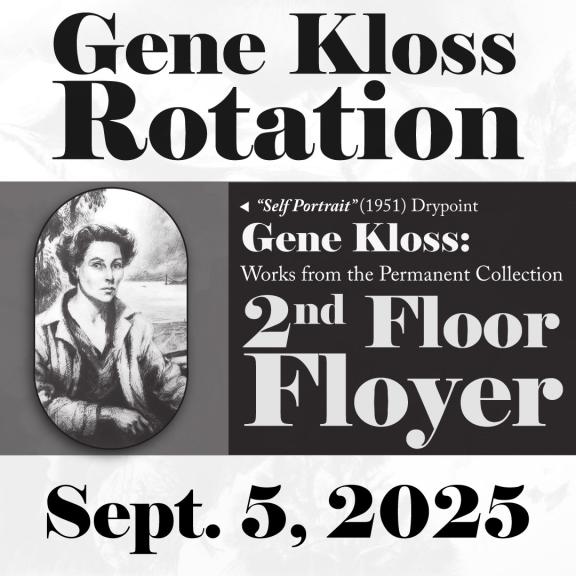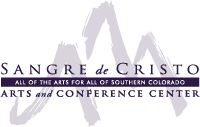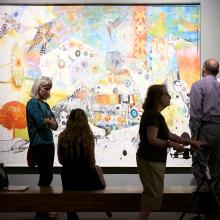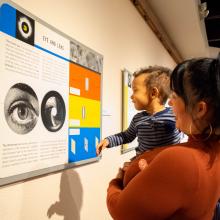
Gene Kloss Rotation
Permanent Exhibit Starting September 5th | Selected pieces will be in rotation
2nd Floor Foyer Gallery
Born Alice Geneva Glasier in Oakland, CA in 1903, Gene Kloss began painting and producing intaglio prints in the Taos area in the mid-1920s. She continued through the mid-1980s, yielding a body of work which is breathtaking in its scope and significance. During her lifetime, Gene Kloss etched more than 627 copper plates, with editions ranging from five to 250. She pulled every print in every edition herself. Believing subject matter dictated technique, she adeptly employed etching, drypoint, aquatint, mezzotint, roulette, soft ground and many experimental printmaking approaches.
From her first exhibition at San Francisco’s exclusive Gump’s in 1937 to her election in 1972 as one of 25 graphic artists recognized as full members of the prestigious National Academy of Design, Kloss’s artistic career was widely hailed. She received numerous awards, and her artworks are included in collections throughout the world, such as the Metropolitan Museum of Art, the National Gallery, and the Library of Congress. She continued to etch until 1985, when declining health made printmaking too arduous.
Thanks to the generosity of donor John Armstrong, the Gene Kloss collection is our fastest growing collection. With almost 800 items represented, the collection includes prints, paintings, watercolors, drawings, original plates and her printmaking tools. The collection is the most extensive collection of Gene Kloss prints in the world.
Gene Kloss passed away on June 24th, 1996, in Taos, New Mexico.

EXHIBITION DETAILS
DATE
Permanent Exhibit Starting September 5th, 2025
- Members: Free
- Adults: $12.00
- Children: $10.00
- Military & Seniors 65+: $10.00
OTHER INFO
Located in the 2nd Floor Foyer
Common Printmaking Techniques
Intaglio
Italian for “cut in”, this method of printing involves carving an image into a flat metal surface, usually copper or zinc, so that the areas to be inked are recessed beneath the surface of the printing plate. Damp paper is placed on the inked plate and run through a press, forcing the paper into the engraved areas and transferring the image.
Etching
A method of intaglio printing. The metal plate is covered with an acid resistant ground . The artist then draws into the ground, with an etching needle and when placed in the acid, it “bites” at the exposed metal.
Drypoint
An intaglio process in which a design is drawn directly into the metal plate. This produces a line which has burrs along the edges, causing the printed line to be characteristically soft and velvety.
Aquatint
A printing technique capable of producing unlimited tonal gradations. A type of rosin is evenly sprinkled over the etching plate, it is then baked on, and the plate can then be repeatedly immersed in acid baths to etch the surface to varying degrees. Gene Kloss sometimes painted the acid on with a brush to get her tonal variations.




